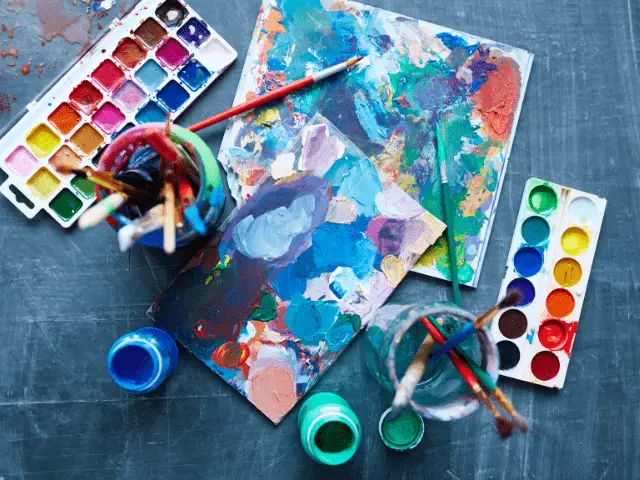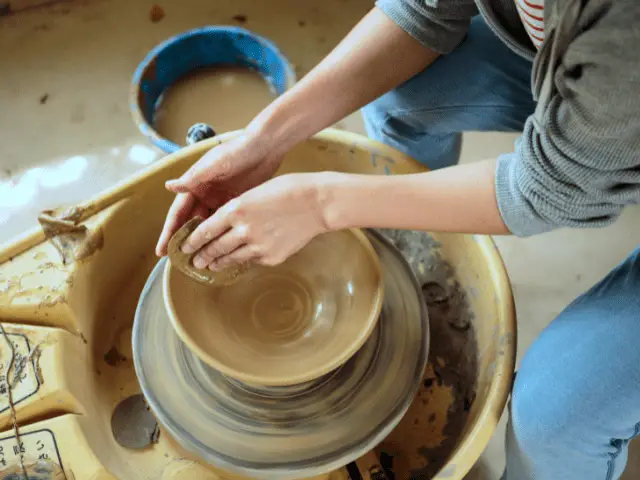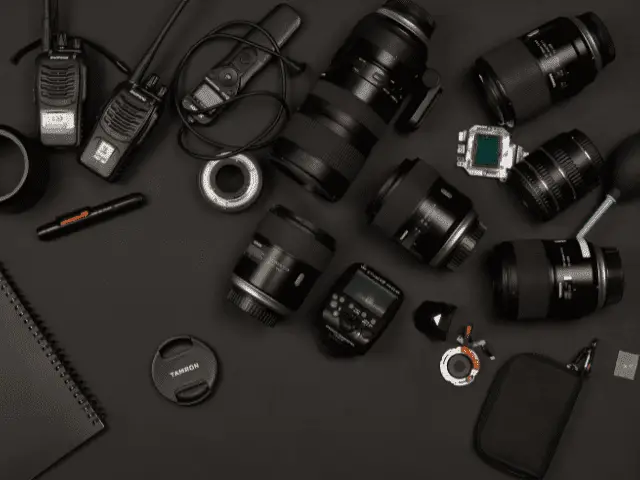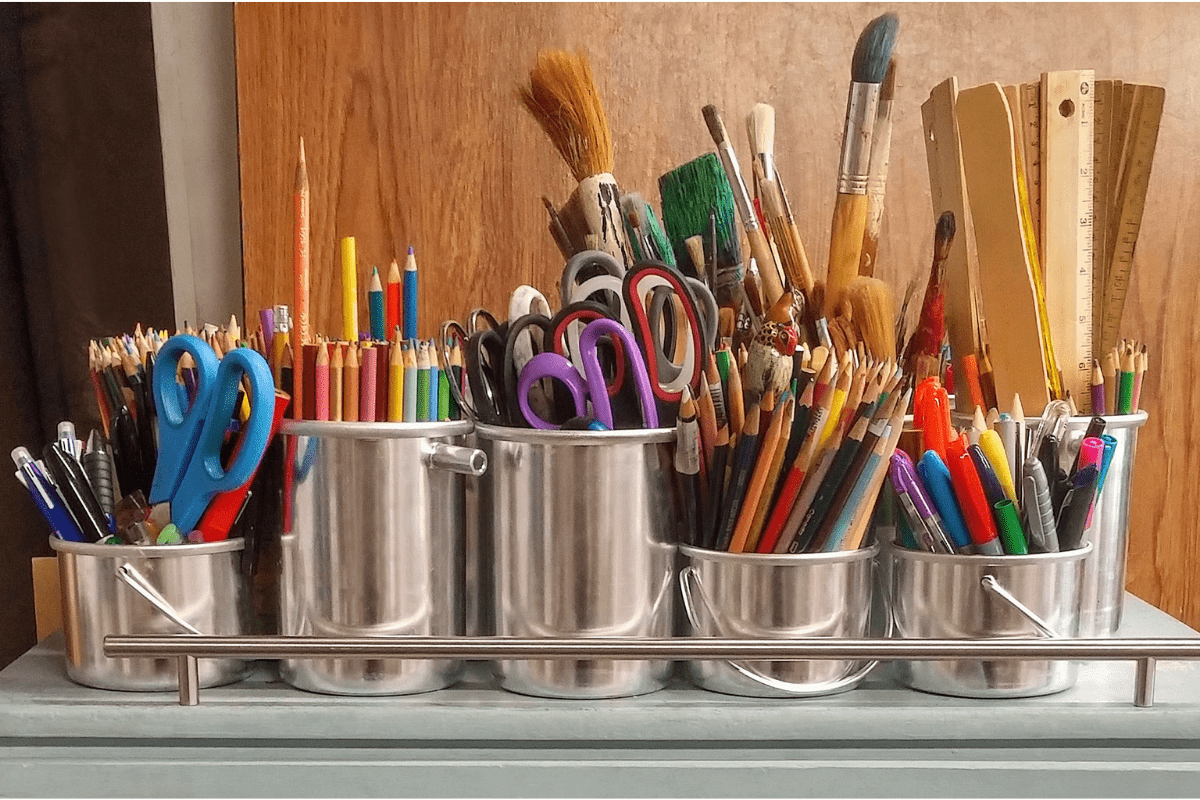Whether you’re a professional artist or a dedicated hobbyist, you surely have a collection of art supplies. And whether it’s a small collection focused on a single genre or an entire studio comprising multiple types of art supplies, you need to use great care when packing them for moving.
It can be tricky since art supplies come in all shapes, sizes, weights, and volumes. In addition, most are fragile or subject to melting or leaking. Some will bend or break without the proper containers. And others (including finished work) will need special shipping due to their fragility.
We undoubtedly won’t be able to cover all types of art and art supplies in this short piece. But we’ll try our best to explain the best ways to pack art supplies for moving.
Drawing comes first since it is a foundation for many other types of art.
However, this does nothing to change the unique variety of drawing tools and implements draftspeople use to create original works of art.
This article contains affiliate links. If you make a purchase through one I may earn a commission.
Table of Contents
Drawing
These artists, known as draftspeople, use many art mediums that can easily break (e.g., graphite pencils, charcoal or ferrous oxide pencils or Conte crayons, pastels, and more).
Then there are the myriad pens like micron pens (how to use micron pens ) and felt-tip markers. Also, there are three types of colored pencils—wax-based, oil-based, and watercolor—each needing different kinds of packing materials and methods.
) and felt-tip markers. Also, there are three types of colored pencils—wax-based, oil-based, and watercolor—each needing different kinds of packing materials and methods.
Moreover, draftspeople use delicate accessories, including various erasers (kneadable, rubber, etc.), paper stumps for blending, compasses for drawing circles, protractors and triangle rulers for creating angles, and S-curves for creating curved lines, and much more.
Here again, many of these art supplies are easy to break. And don’t even get us started on art paper!
So, here are some suggested high-quality packing containers and wrapping materials for drawing supplies:
- Bubble wrap—use rubber bands, not tape, to secure.
- Cling wrap—the stickiest kind possible
- Plastic boxes for smaller items to pack inside larger plastic bins
And be sure not to use any boxes that will crush readily under other protective containers.
Painting

Painting is another visual art form used by many. Here, we recommend using resealable containers for transporting oil, acrylic, and watercolor paint tubes. After all, who wants to unpack a bin containing leaked paint? It will be a mess, especially if it involves more than one paint type or color.
You will also need a separate container for any canvases you’re packing. Keeping them away from the paints, roll them up, seal them in cling wrap or another water-resistant packaging material, and lay them side-by-side in a covered plastic bin.
Note that, under no circumstances should you load any painting chemicals, like turpentine, onto a moving truck. Instead, dispose of it responsibly or donate it to a friend, fellow artist, art center, or school.
Sculpture
Sculpture is one of the most eye-catching types of art, and pieces can range from tiny to huge and, in some cases, require bulky materials and the special transport needs that accompany them. What makes many sculptures so cumbersome is the clay (discussed below), dense wood, glass, metal, or whatever else a sculptor might choose.
So, in many cases, not only does the artist need to pack and move heavy raw materials, but also the often-fragile finished pieces.
Ceramics

Some ceramic works are considered sculptures, while others lean more toward the utilitarian, e.g., bowls and plates. But what marks pieces as “ceramics” is specifically the use of clay, glazes, and a kiln for firing.
Sculpture in general breaks easily when shipped; but ceramics are pretty much always fragile and are best protected when double-crated with lots of stabilizing and buffering material.
with lots of stabilizing and buffering material.
The possibility of breaking finished ceramic pieces notwithstanding, more challenging equipment and materials to pack for moving include unused clay, potters’ wheels, and kilns (which often remain where they were originally built). You can take potters’ wheels apart for moving.
So let’s talk about moving clay. You can pack it wet, which allows for immediate use upon arrival, or dry, making moving more manageable , but it takes a while to rehydrate.
, but it takes a while to rehydrate.
Jewelry and Metal Art
Jewelry and metal art pieces present their creators with similar and different challenges when packing art supplies for moving.
First, larger metal sculptures made from steel, iron, and aluminum—utilitarian metals often meant to hold up in outdoor spaces—can weigh too much for either a moving truck or standard modes of shipping.
On the other hand, pieces made from precious metals and costly stones are relatively easy to pack or ship. However, given the high-priced materials and their market value, they might require extra insurance for loss, damage, or theft. Therefore, we advise you to transport these pieces by having them professionally assessed and shipping them, insured, for the assessed value .
.
Photography

Photography equipment and supplies are among the most straightforward art supplies to pack for moving since most pieces have protective bags and cases. Professional photographers generally spend a lot of time in the field, so they’re used to packing and moving their equipment, but amateurs might not have these readily established practices and routines.
Hard plastic bins are excellent for transporting cameras, lenses, flashes, and other delicate photography equipment. It’s wise to wrap them in bubble wrap (preferably second-hand, provided it’s intact) or corrugated packing cardboard. Fill any gaps with crumpled newspaper or packing paper.
Note that valuable photography equipment should either go with you in your personal vehicle or be shipped. In both cases, you should insure it appropriately for assessed worth—which is more than what most professional moving companies compensate for damages.
Printmaking
Printmaking is one of the oldest art forms, with the first known block printing taking place in China (and Korea) from 618-906 CE, during the Tang dynasty. Printing presses soon followed.
taking place in China (and Korea) from 618-906 CE, during the Tang dynasty. Printing presses soon followed.
Even though more sophisticated printing techniques emerged, including lithographs, etchings, and silkscreen printing, many printmakers still do block printing today, primarily for the handcrafted look it produces. Many printmakers also have or rent studios equipped with various printing presses. Some independent printmakers use more portable hand presses , though—which are much easier to move.
, though—which are much easier to move.
Still, professional printing presses can weigh tons, literally, and would require specialized movers to relocate. Most amateur and professional printers also have several types of printing ink, paper, carving or engraving tools, all that’s needed to sketch out the printing project, and much more.
Computer Art
Some people say that computer art has subsumed all other art forms. After all, there isn’t much that can’t be produced or replicated by computers. And working with computer software—even the highly sophisticated Adobe Creative Cloud—eliminates the manual labor involved with using even a small tabletop printing press.
But is a computer print, drawing, website, etc., any more or less authentic than an original. And what if the computer print is, itself, an original? Instead of going down the proverbial “rabbit hole” trying to address this philosophical conundrum, we’ll just say that computers are beneficial to some artists—though not all.
What Would an Artist Do?
We’re not professional artists ourselves, but I (Jen) do take a weekly pottery class and we both enjoy a Bob Ross painting night now and again.
But, we’re sure if they were here to weigh in, they would be caught off guard at the mere thought of moving their studios across town, much less long-distance. But if it must happen, the well-organized ones would figure it out, and the rest would probably hire professional packers—then return to their true calling.

